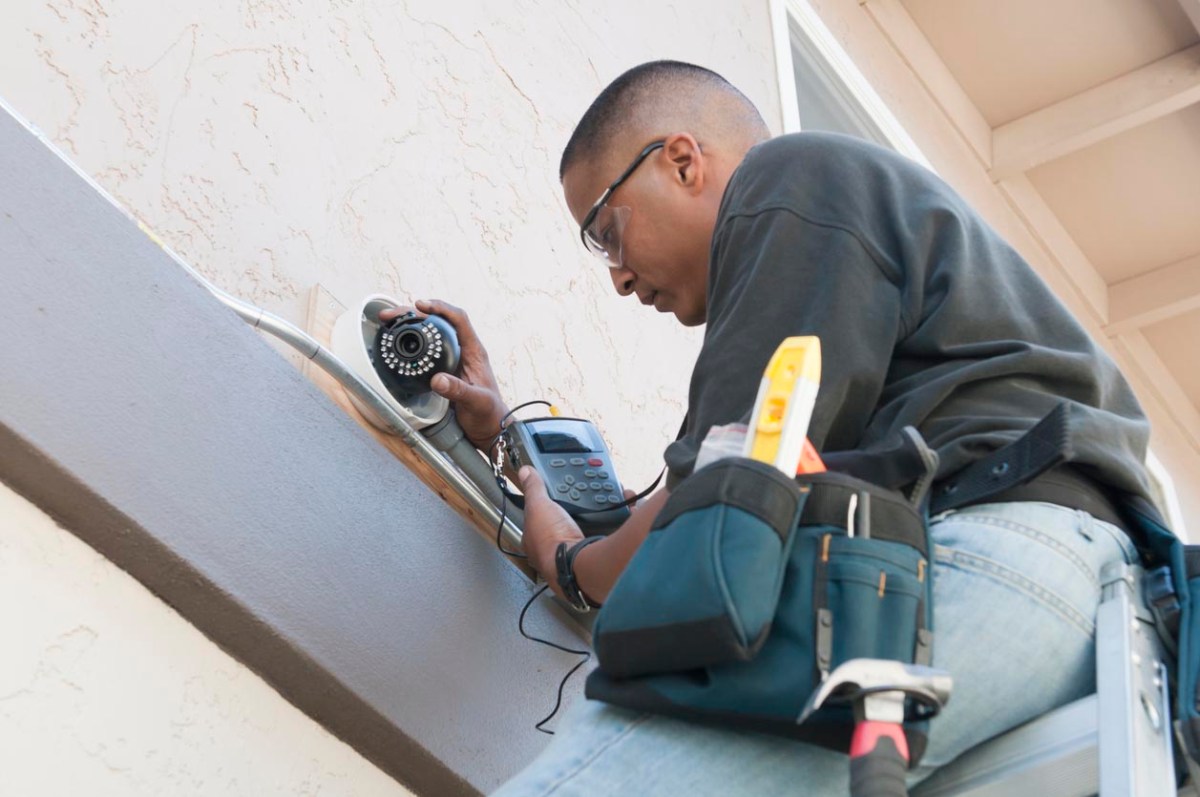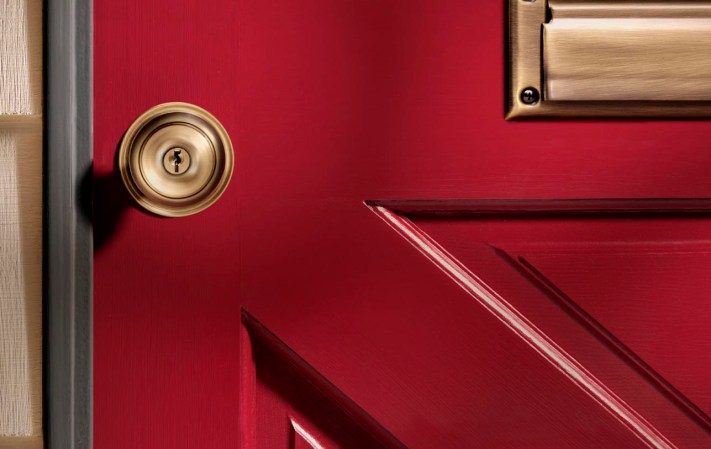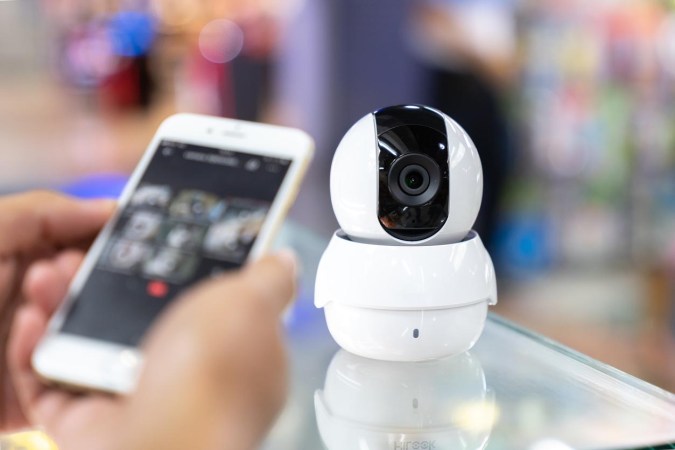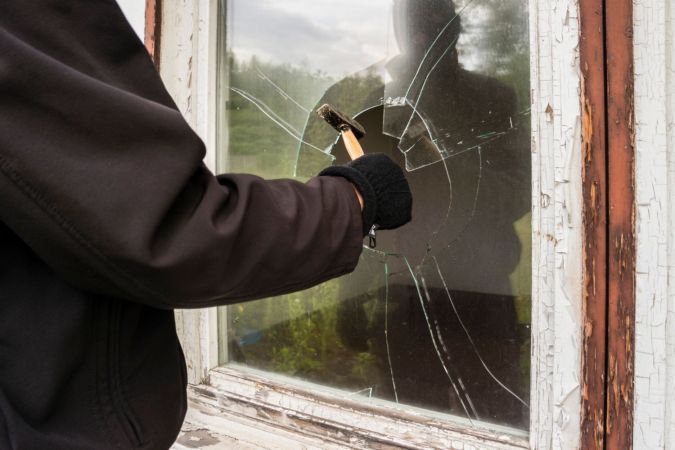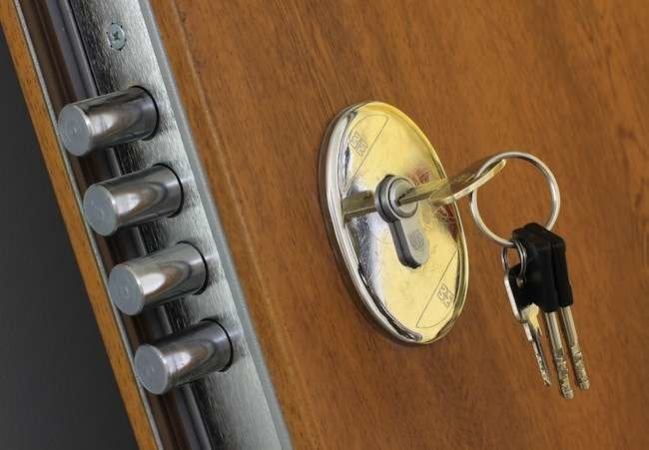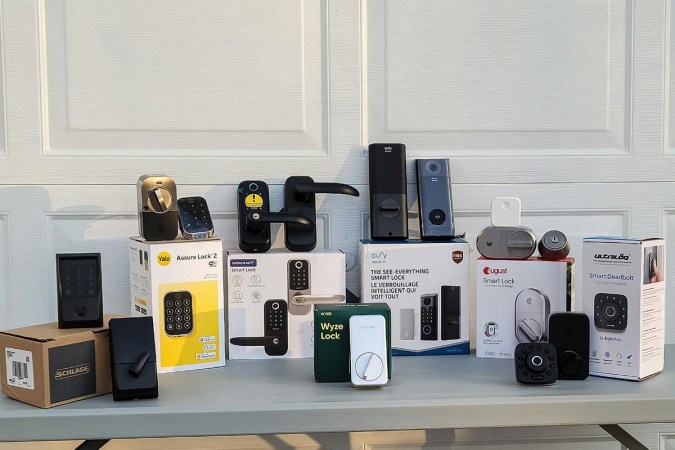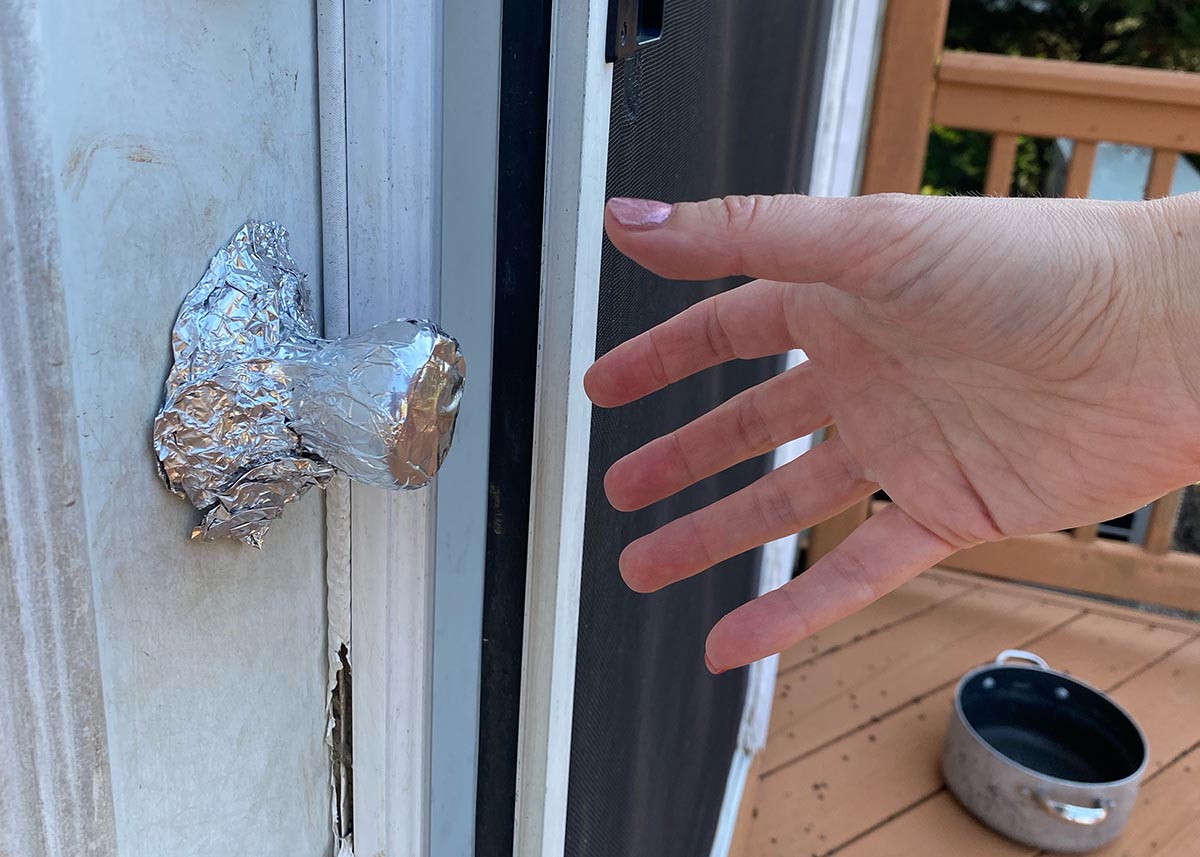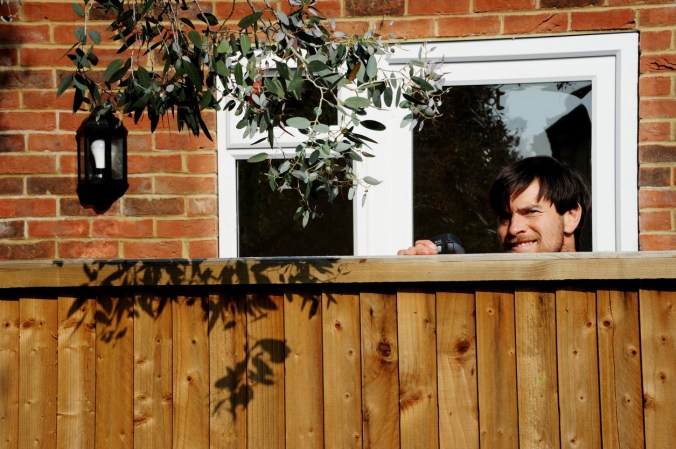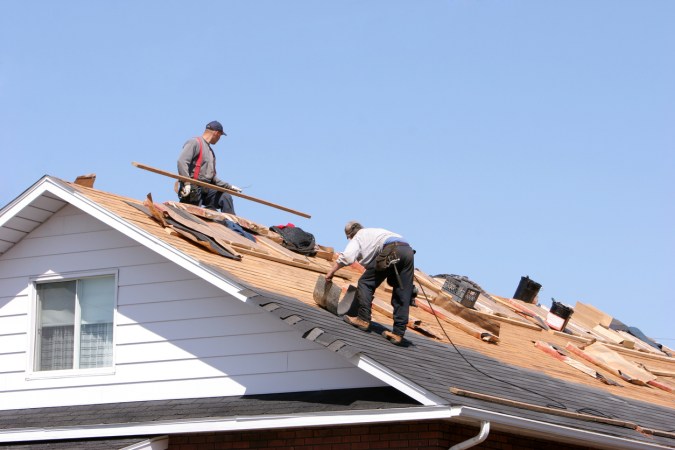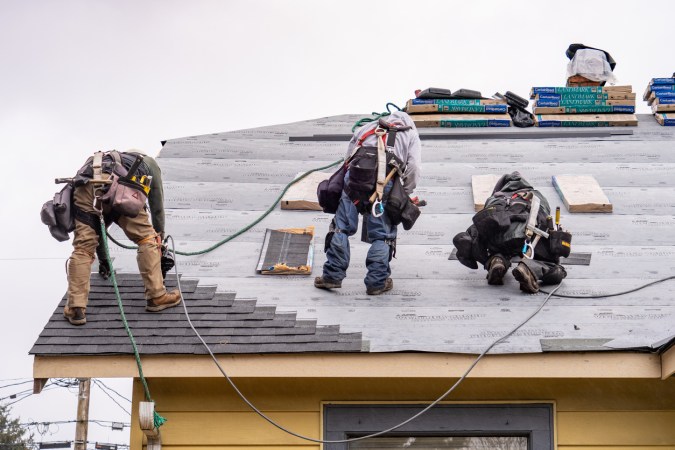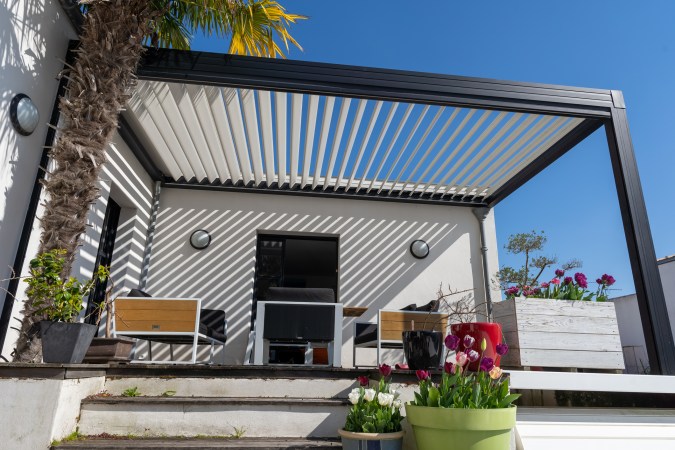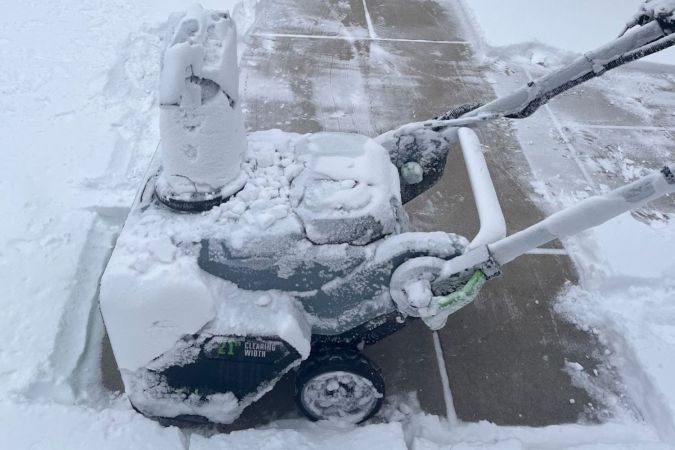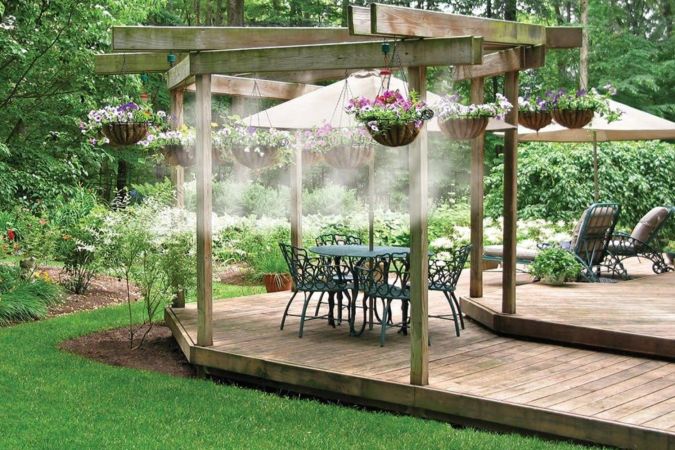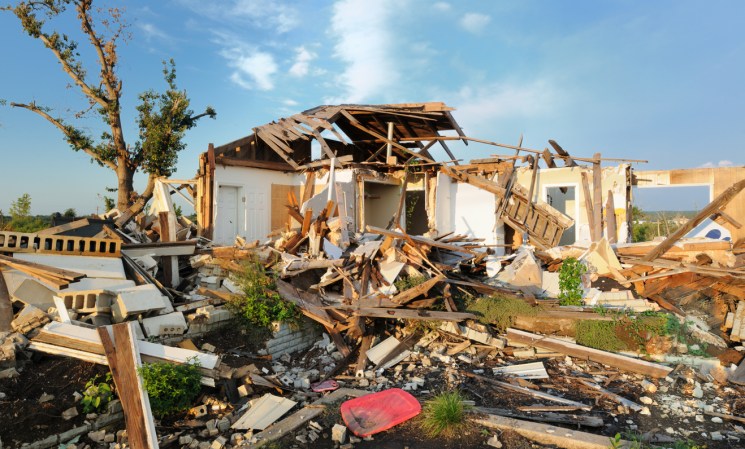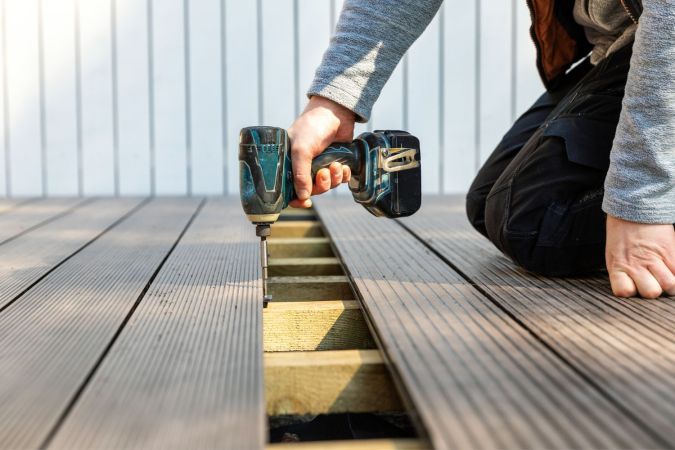We may earn revenue from the products available on this page and participate in affiliate programs. Learn More ›
Installing a security system is a great way to boost home security and grant you peace of mind that you, your family, and your belongings are safe. However, these devices aren’t perfect—and like all electronics, they require regular upkeep to continue working as intended. Security system maintenance is crucial to the longevity and effectiveness of any system, as a camera or motion sensor that’s neglected could lead to gaps in your home’s protection.
Thankfully, home security systems are relatively easy to maintain, and spending just a few minutes every week is often enough to keep them running at their peak. But anyone new to smart-home security systems or folks unfamiliar with electronics might be missing out on key maintenance tasks.
With that in mind, here’s a comprehensive security system maintenance checklist, including how often to perform certain tasks, why maintenance is important, and when to contact a professional for assistance. In the market for a new security system? Check out the best home security systems (such as a system from Vivint or ADT), as these are all reliable and offer many perks to streamline maintenance tasks.
Why Home Security System Technology Needs Upkeep
Home security systems come in all shapes and sizes, but they almost always include some combination of security camera systems, motion detectors, entry sensors, and other gadgets. These devices are designed to be reliable and last years without any issues—after all, a security system is only effective if it’s up and running. However, like all electronics, residential security systems can experience malfunctions and technical hiccups. And if a household isn’t performing routine maintenance, these issues can go undetected or grow into larger problems.
Along with detecting issues and preventing them from growing into something more serious, some alarm security systems require regular intervention as part of their standard operation. For example, many cameras save video clips to local storage. If the storage fills up, you may not be able to save newly captured footage. Many products also require regular software updates, and those who don’t opt for these updates could see a decline in performance.
Ultimately, security system maintenance is all about keeping these devices working to the best of their ability. It’s never smart to neglect electronics, and that’s especially true when those electronics are responsible for keeping a home safe. Anyone struggling with home security maintenance may be more comfortable contacting a professional for assistance. If the system was professionally installed by a company like Vivint or ADT, be sure to reach out for guidance.
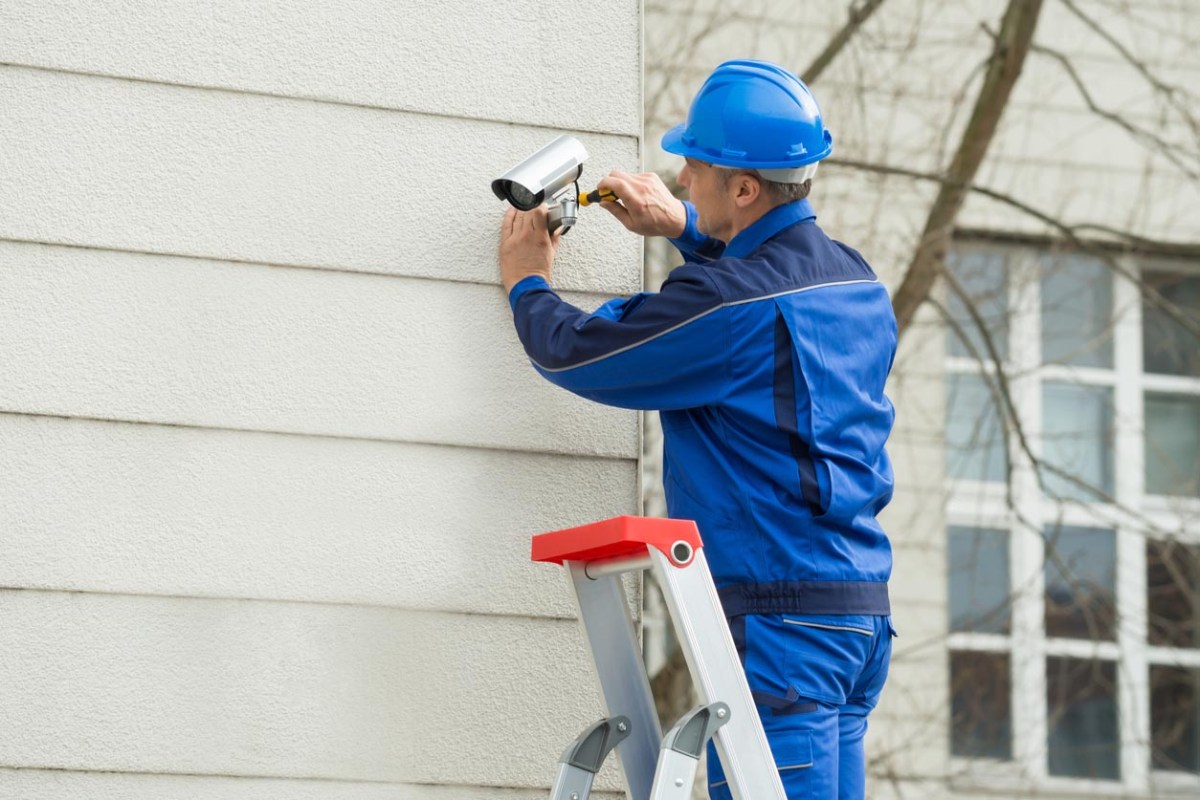
The Ultimate Home Security System Maintenance Checklist
There are a lot of factors to consider when it comes to home security system maintenance. From weekly battery checks to monthly software updates, this guide will walk you through every step of the process. Although the exact steps will vary depending on the specific products installed throughout the home, these are the broad strokes of how to keep your security system running at full capacity.
Weekly Checklist
1. Check Batteries
Checking batteries is a simple task, but it needs to be performed consistently. Depending on the device, battery levels can be checked via a mobile app or through an LED indicator directly on the unit. Keep track of when batteries were last replaced for each part of the system, as this will let them better predict when they’ll need to be replaced or recharged. It’s also essential to keep spare batteries on hand for these replacements. If devices use rechargeable batteries, consider having a second rechargeable battery that can be swapped out as soon as the current one starts getting low.
All battery-powered devices need to be checked, including cameras, smart locks, hazard sensors, wireless sensors, and floodlights. It’s highly recommended that these are checked weekly, but those who keep track of the battery life of all their devices might eventually develop a better idea as to when each device starts to lose power. Outdoor security devices tend to drain faster when the weather is extremely hot or cold, meaning batteries will need to be checked more frequently during the summer and winter.
2. Clean Devices
Security devices can get surprisingly dirty—especially if they are placed outside. Cleaning these products is typically an easy process, but much like checking batteries, it needs to be done regularly. Cameras or motion sensors that have accumulated dust or smudges on the lenses won’t work as well, and those who go too long without cleaning their devices could end up with cobwebs and other physical obstructions blocking their view.
To start cleaning, simply use a soft dry cloth to wipe down any control panels and camera lenses. If tough debris or stains are on the device, a damp cloth can be used before drying the device with a towel. Use a duster to remove dust from objects like entry sensors and motion detectors to prevent them from getting clogged. If there are gadgets that can be rotated or repositioned (such as cameras connected to a magnetic base or with swiveling floodlights), clean inside these joints as well.
“Avoid abrasive cleaning solutions, and never spray anything directly onto a touch screen,” advises Jim Nye, chief product officer with Vivint.
3. Clear Local Storage
Not all devices use local storage. Products like motion detectors, entry sensors, and hazard alarms typically don’t use any storage at all, so these can be left out of this step. However, any products that record video or other data to a local drive need to be checked. If local storage isn’t cleared, these devices might not be able to capture future motion events and save the footage properly.
The process for clearing local storage varies by device. A common way to clear local storage is by connecting the device to a computer, uploading the old footage, then wiping the drive clean. If a microSD card is used for local storage, the card can also be replaced with a new one. Products that use cloud storage typically don’t need to be cleared, as these systems usually hold data for a certain amount of time before automatically purging videos to make space for new ones.
“Typically the worst thing that is going to happen is [that] the local storage device might fail,” says Geoffrey Schorz, product manager with Swann Security. “In that case you may get a time period where it isn’t recording anymore because the drive failed. A good security camera system will alert you if there is an issue with recording.”
Monthly Checklist
1. Update Software and Apps
Security software and smartphone apps don’t require frequent updates, but it’s still important to ensure all devices are running the latest software version. Depending on how the apps are set up, they might automatically update when a new version is available. Double-check the settings of each device to see if auto-updates are enabled. If apps and products aren’t automatically updating, it’s wise to check monthly for new firmware releases.
“Software updates are an important component of smart-home maintenance,” says Nye. “To ensure that your smart-home products are operating at optimal efficiency and leveraging the latest security and compliance measures, you should frequently check for and install updates whenever they are available.”
Products running on older software might not function as intended and could leave a property with a hole in its security. Outdated hardware typically won’t cease to function entirely, but it could be missing out on new and improved functionality, enhanced security features to prevent hackers, and more. While checking software, this is also a good time to update passwords for all devices in the network for additional security.
Whether someone is using a companion mobile app, an in-home control panel, or a smart-home hub to control their system, these are all likely to receive updates throughout the year. Keeping tabs on updates is crucial to their proper function, making it vital to check in on their status every month.
2. Run Self-Diagnostic Test
If a certain piece of hardware is acting up, it may be worth running a few self-diagnostic tests to determine the root cause of the issue. How this plays out depends on which products are installed. Some might come with a built-in feature that scans all its components and lets customers know if something is awry. Others might ping a mobile app to alert users of an error.
Owners can also run their own tests to check if sensors and detectors are working as expected. For example, an owner can walk into the range of a motion detector and see how long it takes for the device to trigger an alert. They can also try to access features they don’t typically use to ensure they’re working properly—such as activating two-way audio on a security camera or setting off a siren to verify the device is still active.
Checking these components in a controlled way can ensure they’re in working order for when an emergency does arise. Check the owner’s manual for each device in the system and see if it offers a self-diagnostic test. If not, carry out manual testing to verify the integrity of the device.
3. Check Environmental Hazard Sensors
Environmental hazard sensors (including fire security systems) are built for longevity, but that doesn’t preclude them from experiencing issues. And unless they’re checked monthly, there’s a chance one of them won’t be able to properly protect a household when an emergency occurs. This makes fire alarm system maintenance and environmental hazard sensor maintenance an important part of home security maintenance.
Thankfully, checking environmental hazard sensors is a simple process. For carbon monoxide (CO) detector and smoke detector maintenance, users will find a test button directly on the faceplate of most units. Pressing this will allow the device to run through a series of checks, ensuring it’s still in working order. Flood and water-leak sensors might also have a button for testing, though they can also be checked by placing them in water and ensuring an alert is triggered.
Any devices that don’t work as expected will likely need to be replaced. Those who don’t want to spend money to replace broken gadgets can reach out to the manufacturer and see if the product is covered by a warranty.
4. Check Status of Medical Alert Devices
Residents who have medical alert devices installed in their home will want to check the devices’ performance at least once a month. They can rope this task in with checking environmental hazard sensors so it’s easier to remember.
There are two primary ways to check the status of medical alert devices. The easiest way is to examine the unit for a “test” button, which is typically located right on the faceplate. Some models even include an LED light that will blink when it’s time for testing—such as the Medical Alert Plus from ADT. Pressing the test button will let the base station send a test alert to the emergency dispatch service. If the test is successful, the unit will typically get a confirmation message. If it fails, it’ll get a failure message, at which point it’s advisable to reach out to the company for a replacement.
If the device does not have a test button, owners will need to contact the company and ask it to perform a status check.
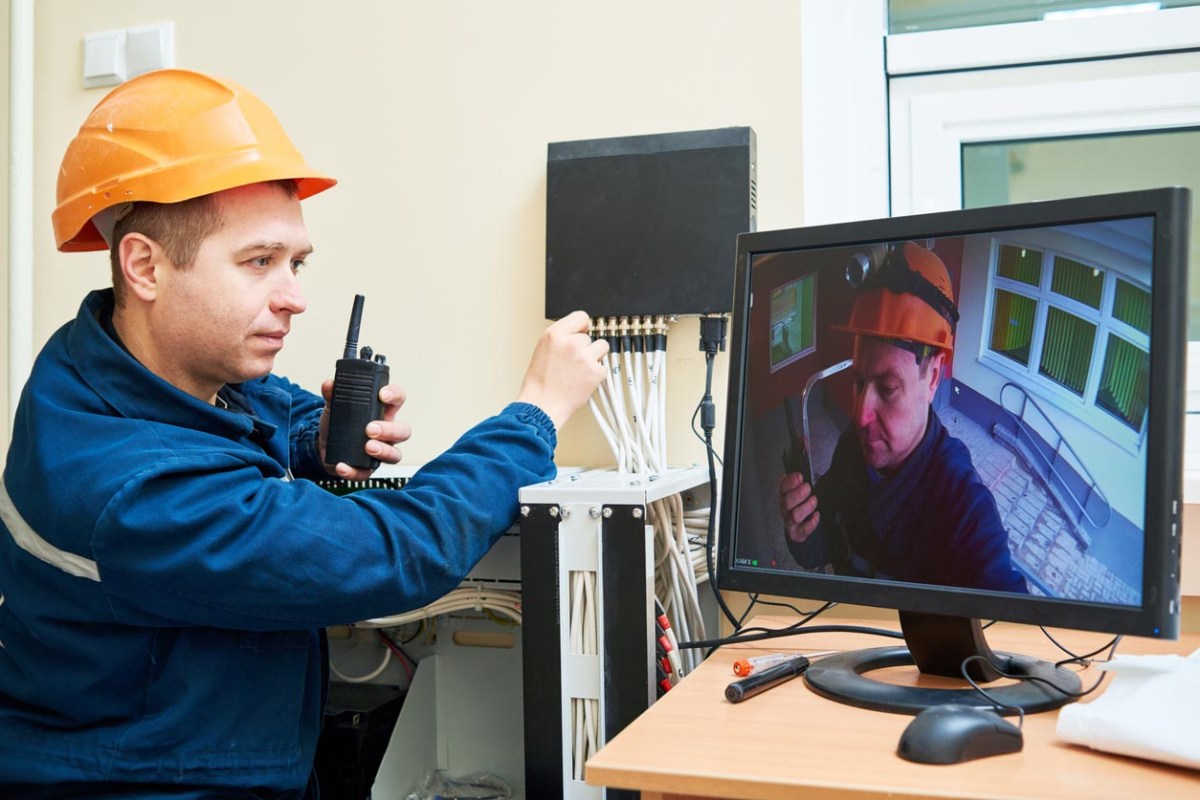
6-Month Checklist
1. Check Outdoor Security Devices
When properly installed, outdoor security devices shouldn’t move or shift during extreme weather events. Unfortunately, that’s not always the case, making it important for residents to perform a perimeter check every 6 months.
To perform a perimeter check, walk around the property and examine all the devices. While doing this, monitor the smartphone app to ensure motion zones and restricted zones are working as expected. If something looks incorrect, now is the time to reset or readjust these settings. Even if a camera hasn’t shifted, a yard may have picked up new landscaping over the months that impacts the camera’s line of sight, making these perimeter checks a great way to verify performance.
This time can also be used to verify the integrity of connections and installations. Most outdoor security devices are built to withstand harsh weather conditions, but they can start to show signs of wear over the years. Consider checking wired connections, mounting brackets, and the integrity of their attachment points (such as the siding of the home) to ensure they’re still firmly connected and not deteriorating. Anyone with questions on how to install security cameras can consult their owner’s manual or contact a professional security camera installation company.
2. Inspect Entry and Motion Sensors
Motion detectors and entry sensors are usually reliable, but it’s important for residents to check them a few times a year. Testing motion sensors is as simple as walking into range while they’re armed and verifying they trigger properly. If they don’t, it’s advisable to change the settings so they work accordingly.
Entry sensors are also easy to test, as owners can simply open and close the door or window a few times, verifying alerts are sent as expected. If they don’t trip, the sensors might need to be reinstalled or reset. There are several types of window alarm sensors, so you have plenty of options when it comes to finding one that fits your needs.
Entry sensors that are installed on frequently used doors and windows (such as a front door) may shift or loosen up throughout the year. It’s essential to check not only that entry sensors are working, but also that they’re snugly attached and not starting to hang off the door frame or window.
3. Check Security Lights
Security lights are an integral part of any house security system, helping to illuminate a property at night and let would-be intruders know they’re being watched. These come in many forms, though floodlights and other motion-activated lights are the most popular.
Checking these devices every 6 months is a great idea, though you may want to consider monitoring them more frequently if they are installed in an area that’s exposed to extreme winds or heavy rain. Floodlights are typically large, bulky units—and because of their size, they can take a beating during intense weather events.
During these checks, owners will want to confirm that the lights are still positioned correctly and are illuminating the right parts of the property. If they’re not, most floodlights can be easily adjusted by simply moving their components into place without the need for tools. If these security lights are also motion-activated lights, test them the same way motion sensors are tested. It’s vital that residents fully understand how motion sensor lights work before reinstalling them, as improperly installed devices can become a nuisance to neighbors.
Annual Checklist
1. Perform a Vulnerability Audit
A vulnerability audit is simply an assessment of the existing security system to ensure it’s adequately protecting the property. There are a lot of factors to consider during an audit, but many of these are simple tasks that should take no more than a few minutes.
The first step of this audit is dealing with any overgrown landscaping. Consider trimming bushes or trees that are blocking the view of security devices or have grown so large that they provide a hiding place for intruders.
Once the property is cleaned up, residents can now assess their actual security system. This includes simple tasks like checking for loose screws on door knobs and hinges, replacing outdoor light bulbs, and repositioning security cameras (if needed). Additionally, this is a great time to evaluate the security needs of the home. Are there any spots that aren’t properly covered by cameras? Does the video doorbell need to be upgraded? Have any new security devices launched into the market that make sense for this property?
Take this time to consider why you installed the security system, how it has been performing, and what you can do to improve it. If you notice any vulnerabilities, you may want to reconsider where to place security cameras to better protect the property and determine how many security cameras they need to cover all entryways. Those considering a change can look into the benefits and drawbacks of wired vs. wireless security cameras, as they work in very different ways. For example, wired models can typically record continuous video, whereas wireless cameras are easier to install.
2. Check the System Warranty and Contract
Home security systems costs can quickly balloon, with many products, such as cameras and floodlights, costing well over $100 each. That can make it difficult to replace existing gear, as owners will have to make a significant up-front investment.
Thankfully, many devices come with lengthy warranties, allowing owners to replace them if they start running into issues within a certain time frame. But if owners wait too long, these warranties expire and no longer permit them to get a replacement unit. Because of this, it’s important to look at the fine print for all items in the system and understand both how long the warranties run and what they cover. If the warranty is coming to an end, this is a great time to see if anything can be replaced for free under the warranty.
Beyond warranties, some professionally installed systems come with contracts that allow customers to upgrade their equipment when renewing their payments. Whatever the case may be, it’s important for customers to check all this paperwork in a timely manner, as it could help them save bundles of cash on their security system.
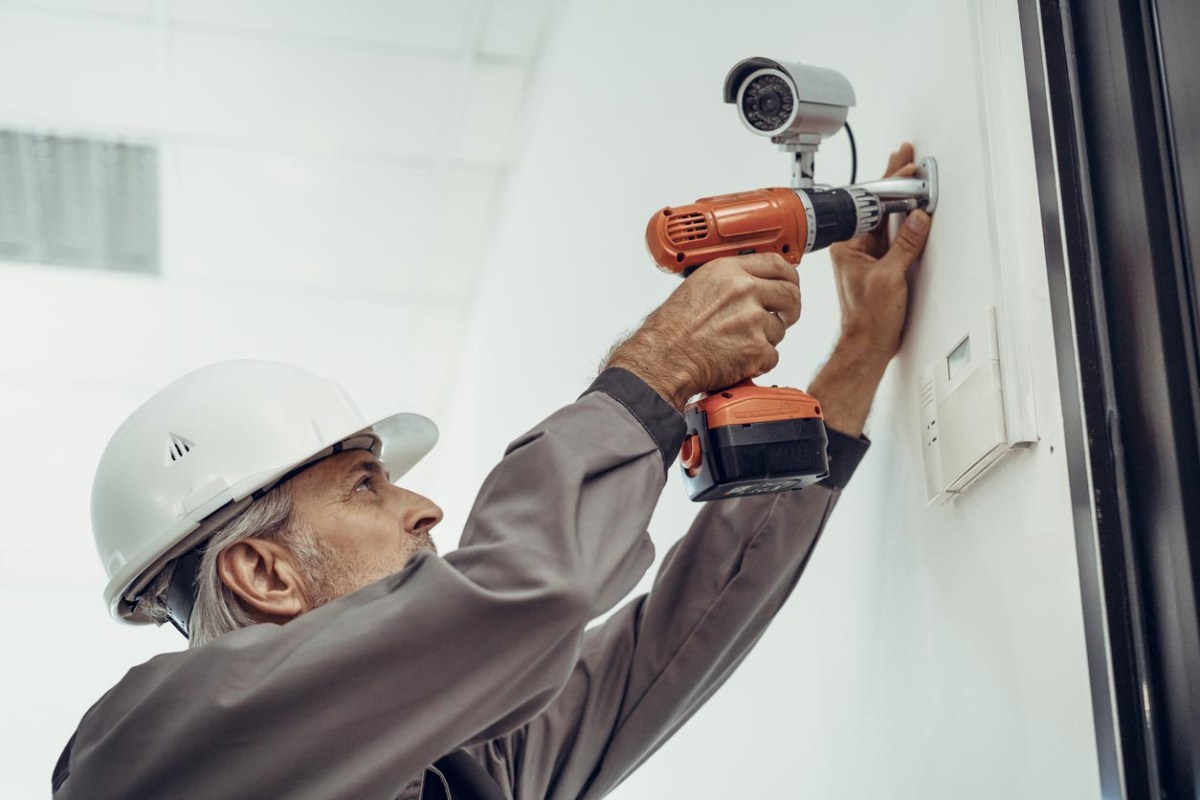
5 Biggest Risks of Neglecting Your Home Security System Maintenance
Forgetting to maintain a security system can lead to serious issues. While there’s no doubt that security gadgets are designed to be durable and long lasting, they’re still electronics, which means they require regular upkeep to continue functioning.
“Systems that are not properly maintained—whether that is due to infrequent software updates or outdated hardware—are ultimately less effective in protecting you and your loved ones, compared to properly maintained systems,” explains Nye. Shahidi agrees: “An improperly maintained security system can decrease the effectiveness of the product and its ability to secure your property. In some instances, neglected components can elicit false alarms, such as those with excess dust buildup or insects inside of a smoke detector.”
Here’s a look at the five biggest risks you may experience by forgoing the above tasks.
1. False alarms
Motion detectors, cameras, environmental sensors, and other security gear that’s not properly maintained runs the risk of signaling false alarms. Whether it be from cobwebs blocking their view, old and damaged wiring, or just a skipped software update, the frequency of false alarms grows as systems are left unattended.
False alarms are a huge cause for concern, as they indicate the system isn’t working as intended. Not only will it make it difficult to detect actual threats, but false alarms can cause undue stress to residents of a home. Seeing a motion alert in the middle of the night is never a fun experience, and if a system is sending false alarms, this could become a frequent occurrence. Even worse, false alarms could mean that actual alarms won’t signal properly when threats are detected, as there’s no way to determine why the system is malfunctioning without an in-depth analysis.
Thankfully, false alarms are easy to mitigate with regular house alarm maintenance. Clearing cobwebs, running diagnostic tests, and checking motion zones and restricted zones are all simple tasks, yet they’re a powerful way to keep the system running smoothly. Staying up to date with these tasks means false alarms should occur rarely, if ever.
2. Increased hacking threat
Software updates aren’t the most exciting aspect of home security, but they’ve become increasingly important in this always-online world. Manufacturers often push software updates as a way to combat hackers and other vulnerabilities, meaning it’s possible to improve a security system simply by checking that it’s running the latest firmware.
Changing passwords for companion apps is just as important as updating software. Many hackers will attempt something known as a “brute force” technique to access accounts. This is done through trial and error—the hacker will simply continue entering common passwords until one of them clicks and gives them access to an account. Frequently updating passwords is one of the best ways to avoid falling victim to these threats.
Smart locks are excellent devices for improving front door security, but they can also be a common target for intruders. Along with checking for software hacks on a security system, many burglars will also look at a smart keypad for signs of wear and tear. Keypads that aren’t frequently cleaned will often leave behind marks on the most used digits, letting burglars know which numbers are likely involved in the passcode. By wiping down the keypad and periodically pressing other keys, it’s possible to prevent these types of attacks.
“An improperly maintained security system can decrease the effectiveness of the product and its ability to secure your property. In some instances, neglected components can elicit false alarms, such as those with excess dust buildup or insects inside of a smoke detector.”
– Hooman Shahidi, senior vice president of product at SimpliSafe
3. Higher operational costs
When security devices begin to fail, they may need to be replaced or serviced by an expert. Sometimes this will be covered by warranties, but other times owners will be on the hook for these expensive fees.
Replacing a faulty entry sensor or motion detector might not be too painful, but having to replace a couple of security cameras or floodlights will quickly add up. There are many types of security cameras, but some can cost upwards of $200. If multiple cameras are neglected and need to be replaced, it’s easy to see how costs can get out of hand. It’s also important to check the details of any warranty, as certain actions (such as improper installation or use) could make it difficult to get a replacement free of charge. Home security systems’ repair costs can put a burden on the household budget, making it important to properly install devices and ensure the conditions of the warranty are being followed to avoid inadvertently voiding it.
All these issues can largely be solved by performing regular maintenance. Much like taking a car in for regular checkups and oil changes helps extend its life, so too does regular testing and upkeep of security gadgets. Just a few minutes every week could be the difference between a system that lasts for years and one that starts failing sooner than expected. To help mitigate costs, customers can opt for a DIY security system, which is typically more affordable than professionally installed systems. Professional security camera installation costs can be expensive, but having a system professionally installed is a great way to guarantee the installation is aligned with the product’s warranty.
4. Decreased system performance
It seems like common sense, but it bears repeating—the less maintenance a system receives, the worse it will perform. Running regular checks on all devices in a security system ensures they’re running to the best of their abilities at all times, meaning that the property is adequately protected.
There’s a lot that can go wrong with security systems, and the larger the system, the more likely it is to experience problems. Outdoor equipment can become loose due to extreme weather, entry sensors can slowly shift over time, motion detectors can gather dust, and batteries on wireless devices can run out of juice. Those who aren’t keeping up with maintenance won’t catch these problems before they become serious issues. In fact, going too long without checking in on devices could lead to missed alerts and leave the home vulnerable to intruders.
Security systems might seem like something that can be installed and forgotten about for months without any intervention, but that’s not entirely true. While manufacturers are certainly producing high-quality gear that’s capable of safeguarding all types of homes, these products need a bit of help to stay in top shape. Residents who notice any issues with a device’s performance will want to check it as soon as possible before the issue grows into something more serious.
5. Shorter security system lifespan
Because most security devices are hands-off and don’t require much babysitting, it’s easy to forget that they’re still just electronics. And like all electronics, they’re not built to last forever. However, performing regular maintenance can extend their lifespan and ensure they keep a home protected for years without any problems.
On the other hand, forgetting to keep up with routine maintenance can have the opposite effect, leading to the early onset of issues and technical glitches, and quite possibly resulting in a device that no longer works. Outdoor products are especially prone to this, as they’re exposed to the elements. If these products are not carefully monitored, small issues can quickly become much more serious. Whether it be from the wind knocking down a device that’s slowly coming loose or water seeping into a small crack that’s slowly grown larger, there are several ways that small issues can spiral out of control if residents aren’t paying close attention.
Losing a security device due to lack of upkeep is frustrating, whether it’s an environmental hazard sensor that no longer works as expected or a camera that now captures fuzzy, incomprehensible images. That makes it all the more important to follow the above steps, as doing so can prevent headaches like these from occurring down the road.
I Forgot to Keep Up With My Home’s Security—And I Regret It
We’re all human, and it’s impossible to stay on top of maintenance tasks all the time. I’ve fallen victim to lackadaisical security system maintenance, as I often find myself traveling and forgetting to tackle basic checks before heading out of town. In fact, I recently forgot to check my smart lock batteries before leaving home for 2 weeks—and when I returned, I learned firsthand how important it is to keep up with routine maintenance.
My front door is equipped with the Yale Assure Lock 2 (which is one of the best smart locks on the market). The model I’m using is touch screen and keyless, giving my home a sleek appearance while also ensuring there’s nothing for burglars to pick. Unless someone knows my passcode, it’s impossible to get inside.
It’s also impossible to get inside if the batteries die. And since I forgot to check the battery level before leaving on vacation, my smart lock was completely drained when I returned. Thankfully, Yale built a battery terminal on the exterior keypad, allowing users to temporarily charge the panel with a 9V battery and get inside their home.
But, as you’d expect, I didn’t have a 9V battery on me, in my luggage, or in my car. So, after a lengthy flight home and an hour-long drive back from the airport, I had to take a detour to my local grocery store—the last thing I wanted to do after an exhausting day of travel.
The moral of the story? Forgetting to keep up with home security maintenance can lead to plenty of headaches and costs you precious time. I’ve now set a variety of recurring tasks on my calendar to help me keep tabs on all my security system maintenance tasks, and hopefully, I’ll never lock myself out of my home again. Home security systems are a worthwhile investment, but unless you’re keeping tabs on all your gadgets, they won’t perform to the best of their abilities.
Setting alerts like I do won’t work for everyone, but it’s important to find a system that works for you and lets you keep tabs on every device in your home. Consider looking into options like setting alarms, setting calendar alerts, aggregating everything into a platform like Google Home for easy access, or enabling push notifications on your smartphone so apps can inform you when they need updates.
